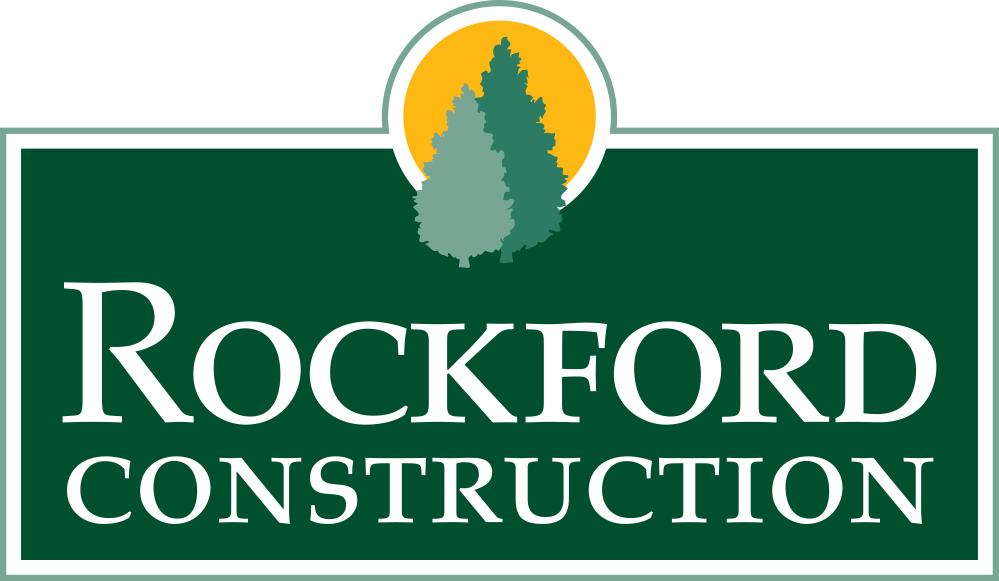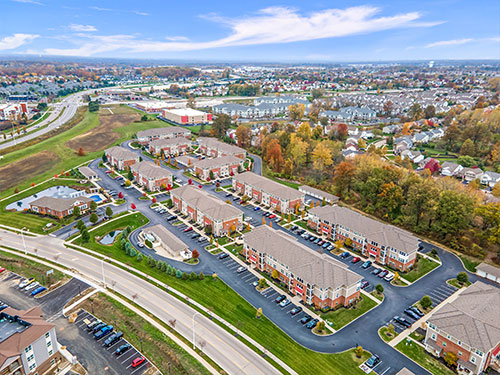
Why You Should be Investing in Multi-Family Construction Right Now
Investing in multi-family construction can be a game-changer for your real estate investment portfolio. Why? Because these investments offer many advantages, such as steady cash flow, reduced risk, and investment portfolio diversification.
Welcome to Rockford Construction’s blog! Today, we’ll be discussing the topic of “Why You Should Be Investing in Multi-Family Construction Right Now.”
In this blog, we’ll guide you through the ins and outs of multi-family construction, from understanding the types of real estate investments, residential properties, and financing options to working with professionals and navigating legal considerations.
By the end, you’ll be well-equipped with the knowledge to tap into the potential of this thriving real estate segment and start your multi-family real estate investing journey.
Key Takeaways
- Investing in multi-family construction offers the potential for steady cash flow, portfolio diversification, and lower risk.
- Rents at residential rental properties have increased by 36% in the last decade. And with home prices and mortgage rates soaring, rental demand will only increase.
- Completing a multi-family investment property requires the expertise of professionals throughout all phases of the complex process.
- Adhering to legal regulations such as zoning, building codes, and tenant rights is essential for success when investing in multi-family construction projects.
Understanding Multi-Family Construction
Unlike residential single-family homes, multi-family properties can be classified as residential properties or commercial real estate, depending on the number of units they contain. Multi-family properties are considered residential buildings when they house between two and five units under one roof.
Properties with five or more units are typically referred to as multi-family commercial real estate (MFCR) and include large apartment buildings and apartment complexes.
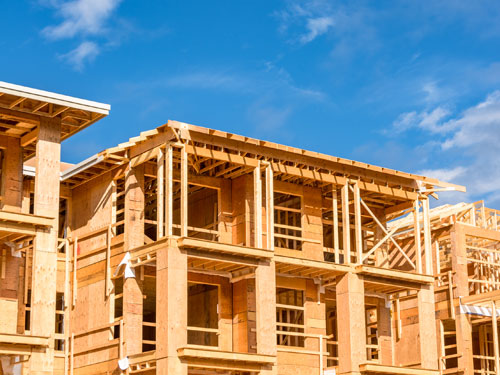
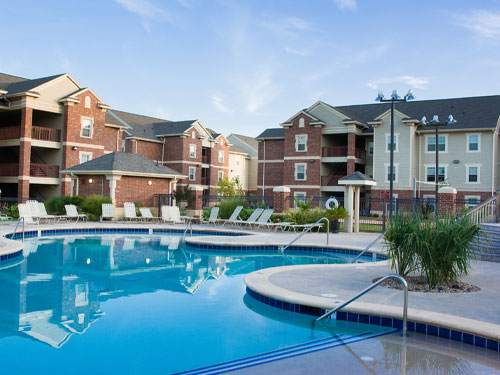
Types of Multi-Family Properties
There are various types of multi-family properties available for investment, including:
- Duplexes
- Triplexes
- Fourplexes
- Apartment complexes
Among the more interesting factors that make these properties attractive is their resilience in the face of “bad tenants.” Even with the occasional non-payer or tardy payer, multi-family investments reduce the risk of having all non-paying or “bad tenants,” as multiple rental units minimize the likelihood of this occurrence, with rental income continuing to be received from remaining tenants.
Factors like location, neighborhood, and prevailing local rental market conditions should guide investment in any of these investment property types. For example, rental properties in areas with good school districts, up-and-coming neighborhoods, ready infrastructure, and many attractions tend to be more attractive to renters and command higher rental prices.
Understanding the nuances of each property type will help you make informed decisions and find the best investment opportunities.
Benefits of Investing in Multi-Family Construction
Numerous advantages back the decision to invest in multi-family construction. Some of the main benefits include:
- Potential for steady cash flow, as multiple tenants mean multiple rent payments.
- Ability to grow passive income and net worth faster than investing in single-family properties.
- Degree of protection against market volatility, as multi-family investments tend to be less affected by fluctuations in the real estate market.
Portfolio diversification is another significant benefit of multifamily real estate investing. Adding multi-family properties to your real estate investment portfolio enables risk to be spread across various property types and locations, leading to a reduction in the overall investment risk.
Furthermore, rental income from multi-family properties can be more stable than single-family homes, as they typically have lower vacancy rates. Having multiple units reduces the likelihood of all units being vacant simultaneously.
This combination of steady cash flow, portfolio diversification, and lower risk makes multi-family construction an attractive option for both experienced and first-time investors.
The Multi-Family Construction Process
Multi-family construction encompasses various stages, ranging from site selection and feasibility to construction and development. This complex process requires the expertise of a multi-family construction contractor, who provides materials, labor, and equipment for the project.
Each phase of the process is crucial, and working with professionals at every step ensures the successful completion of your multi-family residential property.
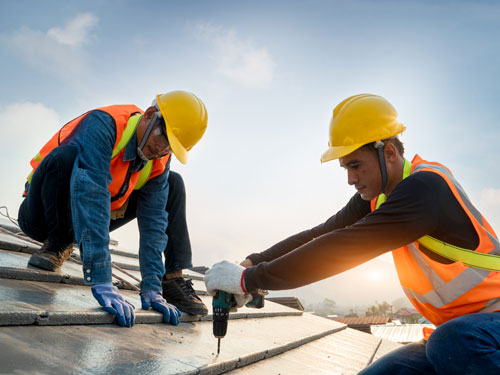
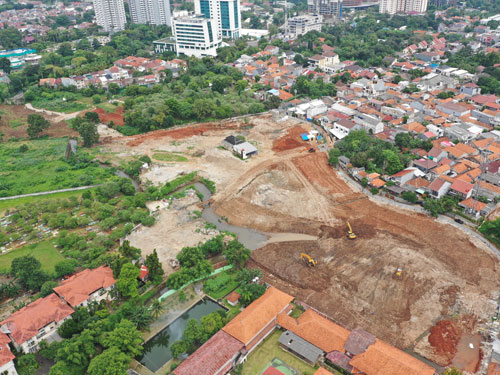
Land Acquisition
Finding suitable land for multi-family construction is a critical first step. It involves researching applicable zoning regulations, analyzing the local market, and evaluating the land parcel’s potential.
This phase necessitates due diligence to uncover any potential issues with the land parcel. Ensuring the land is suitable for multi-family construction will help set the stage for a successful project.
Design and Planning
Once the land has been acquired, the design and planning phase begins. Creating functional and profitable apartment buildings and multi-family properties demands collaboration with architects and engineers. These professionals will ensure that the building adheres to all local building codes and regulations, optimizing the property’s layout and design to maximize rental income and tenant satisfaction.

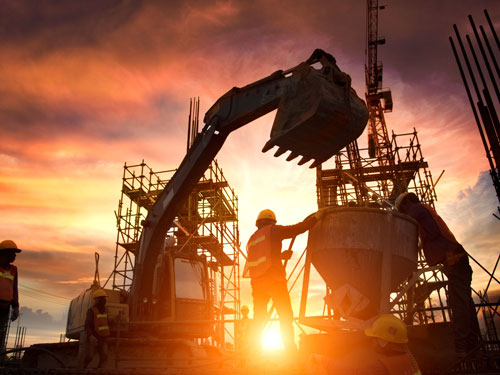
Construction and Development
With the design and planning complete, the construction and development process commences. Quality construction and timely project completion require the hiring and management of contractors and subcontractors. Overseeing the construction process enables you to address any issues that arise, ensuring that the project adheres to the timeline and budget.
By effectively managing the construction and development phase, you’ll be well on your way to creating a successful multi-family property.
Financing Multi-Family Construction Projects
Any multi-family construction project greatly depends on financing. There are several financing options available, including traditional loans, government-backed loans, and private funding sources. Choosing the right financing option depends on your individual circumstances, such as your financial situation, risk tolerance, and investment goals.
A grasp of the various financing options aids in making informed decisions and obtaining the required funds for your multi-family construction project.

Traditional Loans
Traditional loans, such as commercial mortgages, are a common financing option for multi-family construction projects. These loans usually offer higher loan amounts, competitive interest rates, and extended repayment terms. However, they also come with stringent eligibility criteria, longer processing times, and higher closing costs.
Considering traditional loans requires a balance of their pros and cons and assessing whether this financing type aligns with your investment aspirations. Traditional loans may be suitable for some investors, but others may find better options through government-backed loans or private funding sources.

Government-Backed Loans
Government-backed loans, such as FHA and HUD loans, offer more competitive interest rates, flexibility, and more lenient credit requirements than traditional loans. These loans can be an attractive option for investors who may not qualify for traditional financing or who are looking for more favorable loan terms.
A thorough research and understanding of the specific requirements and benefits of government-backed loans are needed to determine their suitability as a financing option for your multi-family construction project.
Private Funding Sources
Private funding sources, such as real estate syndication and crowdfunding, offer alternative financing options for multi-family construction projects. These sources can be incorporated into your investment strategy by providing access to capital that may not be available through traditional lenders. This can allow investors to secure funding more quickly and with fewer restrictions.
By exploring private funding options, you can potentially secure the necessary capital for your multi-family construction project while avoiding some of the drawbacks of traditional loans.
Analyzing Potential Multi-Family Construction Investments
Before embarking on a multi-family construction investment, a comprehensive analysis of the potential investment is necessary. This includes market analysis, financial projections, and risk assessment, which help you evaluate the viability and profitability of the project.
By carefully examining these factors, you can make informed decisions and ensure the success of your multi-family construction investment.

Market Analysis
Market analysis is instrumental in pinpointing high-demand areas and potential growth opportunities for your multi-family construction project. This process involves evaluating factors such as:
- Population growth
- Job growth
- Income levels
- Cost of living
Additionally, assessing the competition in the market, including the number of existing multi-family properties and their rental rates, can help you determine the potential demand for your project.
A comprehensive market analysis will enable you to make informed decisions and maximize the return on your investment.

Financial Projections
Accurate financial projections are fundamental to estimating potential income, expenses, and return on investment (ROI) for your multi-family construction project. This process involves projecting rental rates and occupancy levels and considering local market conditions, all of which contribute to the net operating income.
A good return on investment for a multifamily investment can be between 14% and 18%, depending on the local real estate market and asset class. Additionally, a Cash-on-Cash Return of 5% to 10% is normal for a value-added multi-family syndication opportunity, with the potential for further returns as the optimization plan takes effect.
By developing a clear financial picture of your project, you can better assess its viability and profitability, ensuring that your real estate investing decisions align with your financial goals.
Risk Assessment
The best investment strategy for multifamily real estate is balancing value-add and core investments. This allows investors to utilize stable cash flow, property appreciation, and quick renovations.
Risk assessment is a key component in decision-making for multi-family construction investments. Some potential risks include:
- Market volatility, which can impact the cost of materials and labor
- Construction delays
- Tenant turnover, which can affect the income generated by the investment
By carefully evaluating these risks and their potential impact on your project, you can make informed decisions and minimize the likelihood of unexpected challenges.
Working with Professionals in Multi-Family Construction
The success of your multi-family construction project hinges on collaboration with professionals like architects, contractors, and property managers. These professionals bring their expertise and experience to the table, helping you navigate the complexities of the construction process and guaranteeing the timely completion and high quality of your project.
Professional collaboration at every stage of the multi-family construction process can have a significant impact on the profitability and success of your investment.
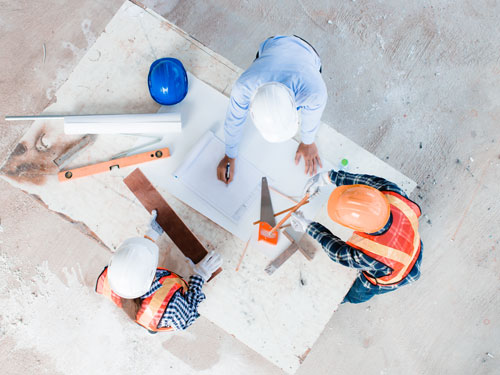

Architects and Engineers
Collaborating with architects and engineers is vital for designing functional and profitable multi-family properties. These professionals ensure that the building adheres to all safety and building codes, optimizing the property’s layout and design to maximize rental income and tenant satisfaction.
By working closely with architects and engineers, you can create a multi-family property that meets the needs of your tenants while generating a healthy return on investment.
Contractors and Subcontractors
In multi-family construction projects, the hiring and management of contractors and subcontractors is a crucial element. These professionals are responsible for the physical construction of the building and ensuring that it is completed on time and within budget.
By effectively managing contractors and subcontractors throughout the construction process, you can ensure the successful completion of your multi-family property without compromising on quality or timeline.


Property Management
Partnering with a property management company is an indispensable component of owning multi-family properties. These professionals provide the following services:
- Overseeing tenant relations
- Managing property maintenance
- Ensuring that your property remains in excellent condition
- Retaining its value over time
By working with competent property management professionals or an established property management company, you can focus on growing your real estate portfolio while leaving the day-to-day oversight of your apartment complex in capable hands.
Legal Considerations for Multi-Family Construction
Legal considerations play a significant role in the execution of multi-family construction projects. These considerations include zoning regulations, building codes, and tenant rights, which can significantly impact the success of your investment.
Real estate investors must understand and comply with these legal requirements to ensure their multi-family construction project is completed smoothly, without any unexpected legal hurdles.

Zoning Regulations
Zoning regulations play a significant role in multi-family construction projects. These regulations dictate the types of buildings that can be constructed, as well as their size, height, and other characteristics.
A successful project depends on adherence to zoning regulations, as non-compliance could lead to costly penalties and delays.
Understanding and abiding by these regulations will help you create a multi-family property that is both legally compliant and profitable.
Building Codes
The safety and quality of multi-family properties require compliance with building codes. These codes establish minimum requirements for the design, construction, alteration, and maintenance of buildings and other structures.
By working closely with architects, engineers, and contractors, you can ensure that your multi-family construction project adheres to all applicable building codes, guaranteeing the safety and durability of your investment.
Tenant Rights
Tenant rights and responsibilities play a significant role in multi-family properties. These rights include privacy, proper communication with the landlord, and the right to improve the property, among others.
For maintaining a positive landlord-tenant relationship and ensuring the long-term success of your multi-family property, understanding tenant rights is important.
Understanding and respecting tenant rights can create a harmonious living environment for your tenants and protect your investment.
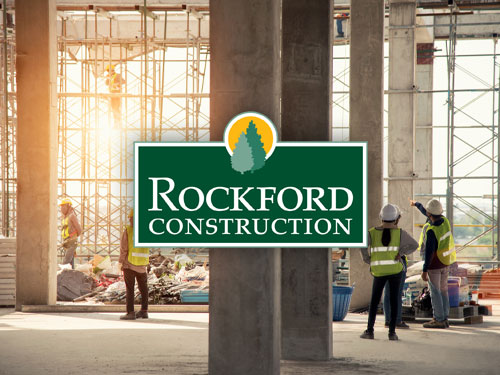
Start Your Multi-Family Journey with Rockford Construction
Now is the best time to invest in multifamily properties before rental rates decline, as more rental housing units are being built, which will cause rental rates to fall back to more favorable levels.
Based on macroeconomic trends in October 2023, multifamily investing in real estate appears favorable. Homeownership is more expensive than ever, increasing demand for multifamily properties. Thus, multifamily is predicted to be a good investment well beyond 2023.
As a leading Ohio-based full-service general contracting and construction solutions provider, Rockford Construction specializes in various services, including apartment building construction, multi-family residential construction, multi-unit townhouse construction, single-family in-fill construction, senior living construction, and more.
We have partnered with countless multi-family construction developers, and our team understands the various types of multi-family construction projects, their financing, and the process of bringing your project to a successful completion.
Contact Rockford Construction today. We’re here to help you navigate the complexities of multi-family construction and maximize the return on your investment.

